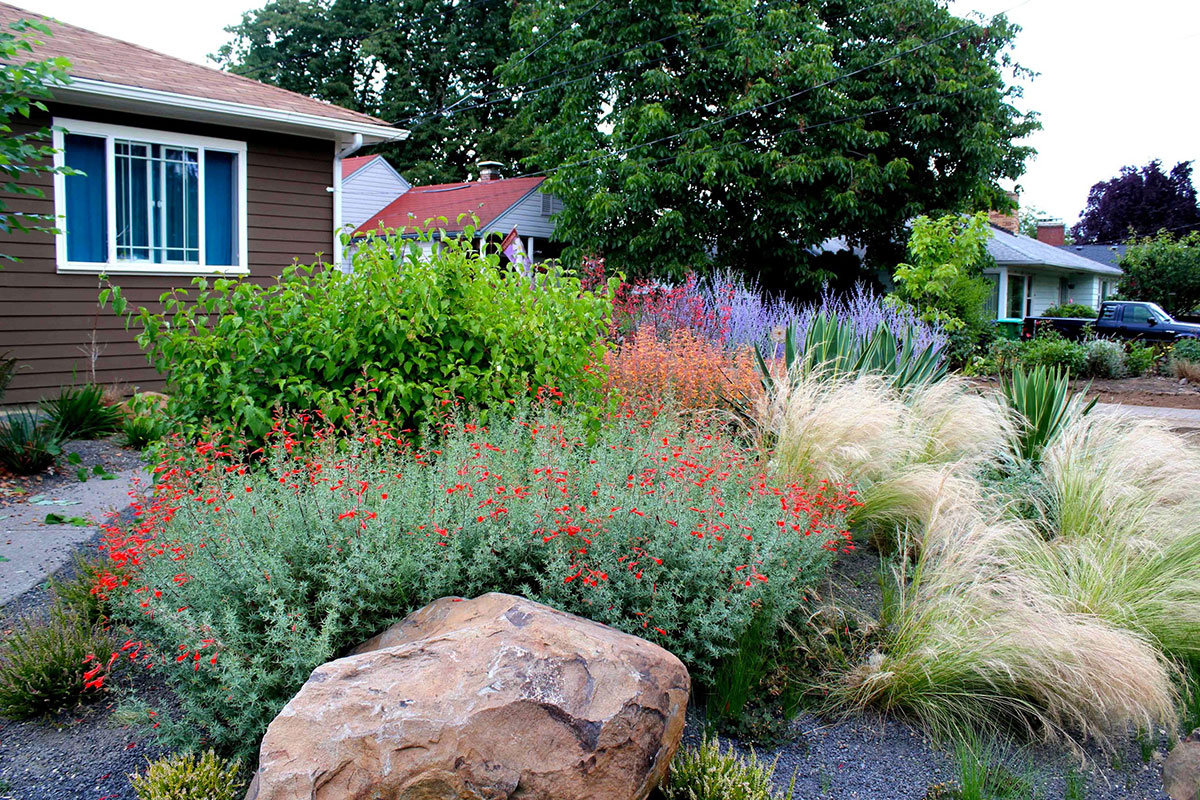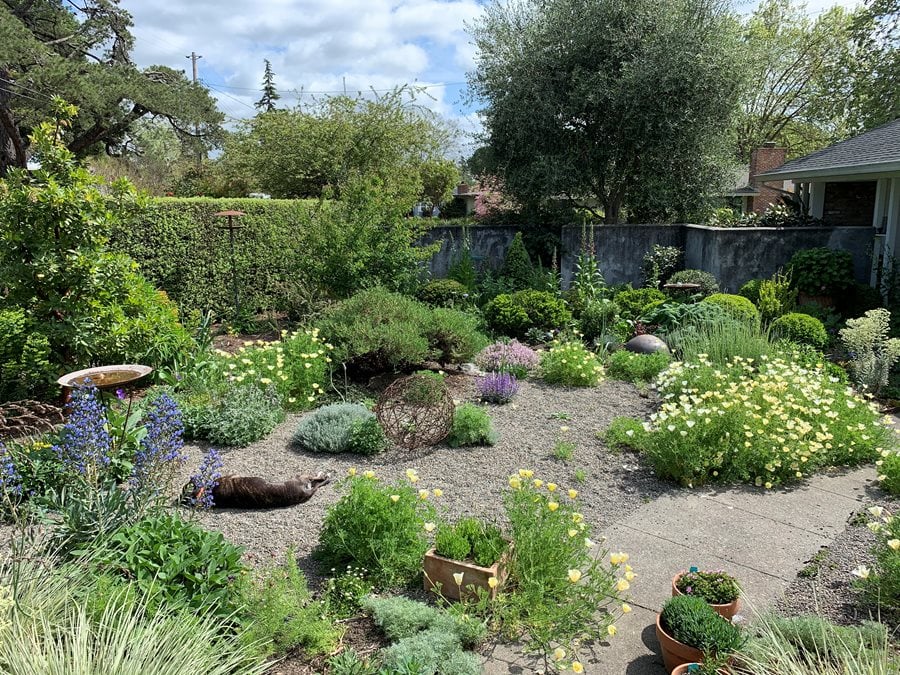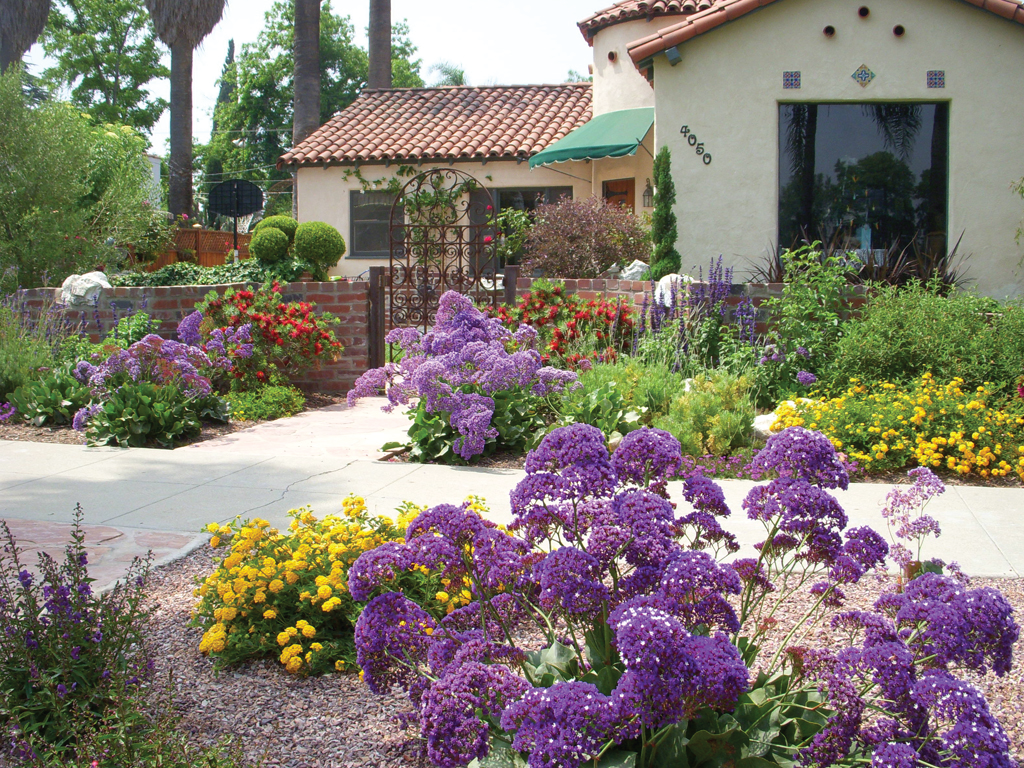Understanding Drought-Tolerant Gardening

Embracing drought-tolerant gardening is a wise and sustainable approach to landscaping, especially in regions facing water scarcity. This practice not only conserves precious water resources but also fosters a resilient and beautiful garden that thrives despite arid conditions.
Benefits of Drought-Tolerant Gardening
Creating a drought-tolerant garden offers numerous benefits, both for the environment and for you.
- Water Conservation: This is the most significant benefit. By selecting plants that naturally require less water, you can significantly reduce your water usage, contributing to sustainable water management.
- Reduced Maintenance: Drought-tolerant plants often require less frequent watering and pruning, freeing up your time and energy for other activities.
- Cost Savings: Lower water bills are a direct result of reduced water usage, leading to significant cost savings in the long run.
- Environmental Sustainability: By conserving water, you contribute to the overall health of the environment, reducing stress on local water resources and promoting biodiversity.
- Increased Resilience: Drought-tolerant gardens are better equipped to withstand periods of dryness, ensuring a vibrant landscape even during challenging weather conditions.
Environmental Factors Contributing to Drought
Understanding the factors that contribute to drought conditions is crucial for making informed decisions in your garden.
- Climate Change: Rising global temperatures and altered precipitation patterns are increasing the frequency and severity of droughts in many regions.
- Population Growth: As populations grow, the demand for water increases, putting strain on water resources and exacerbating drought conditions.
- Land Use Changes: Deforestation and urbanization can disrupt natural water cycles, leading to reduced water availability and increased drought risk.
- Water Management Practices: Inefficient irrigation systems and unsustainable water extraction practices can contribute to water scarcity and drought.
Identifying Drought-Tolerant Plants
Selecting the right plants is fundamental to successful drought-tolerant gardening. Here are some tips for identifying plants that thrive in arid conditions:
- Native Plants: Plants native to your region have evolved to withstand local climate conditions, including drought. They are often well-adapted to the soil, temperature, and rainfall patterns of your area.
- Water-Wise Plants: Look for plants labeled as "drought-tolerant," "water-wise," or "xeriscape" plants. These plants are specifically bred or selected for their ability to thrive with minimal water.
- Deep Root Systems: Plants with deep roots can access water sources that are deeper in the soil, making them more resilient to drought. Examples include cacti, succulents, and certain types of shrubs.
- Succulents: Succulents are excellent choices for drought-tolerant gardens. They store water in their leaves, stems, or roots, allowing them to withstand periods of dryness.
- Grasses: Certain types of grasses, such as fescue and buffalo grass, are drought-tolerant and can create a lush lawn with minimal watering.
Selecting Drought-Tolerant Plants: How To Create A Drought-tolerant Garden

Now that you understand the basics of drought-tolerant gardening, let's delve into the heart of the matter: choosing the right plants. The key is to select species that are naturally adapted to arid conditions, requiring minimal water to thrive. These plants have developed unique strategies to conserve moisture, such as deep root systems, waxy leaves, and efficient water-use mechanisms.
Native Plants for Dry Climates, How to create a drought-tolerant garden
Native plants are a fantastic starting point for drought-tolerant gardens. They've evolved in your region's specific climate, making them perfectly suited to the local conditions, including the amount of rainfall and soil type.
- Cacti and succulents: These iconic desert dwellers are masters of water conservation. Their fleshy stems and leaves store water, allowing them to withstand long periods of drought. Examples include prickly pear cactus (Opuntia), barrel cactus (Ferocactus), and agave (Agave).
- Grasses: Many grasses, like blue grama (Bouteloua gracilis), switchgrass (Panicum virgatum), and buffalo grass (Buchloe dactyloides), are incredibly drought-tolerant and add a natural, flowing texture to your garden.
- Shrubs: Numerous shrubs are adapted to dry climates, offering a range of colors, shapes, and sizes. Some popular options include desert willow (Chilopsis linearis), yucca (Yucca), and mountain laurel (Kalmia latifolia).
- Wildflowers: Wildflowers, like California poppy (Eschscholzia californica), desert marigold (Baileya multiradiata), and desert lupine (Lupinus), add vibrant bursts of color to your garden while requiring minimal water.
Comparing Drought-Tolerant Plants
Not all drought-tolerant plants are created equal. Understanding their individual needs and characteristics is crucial for successful gardening.
Water Requirements
Drought-tolerant plants fall into different categories based on their water needs:
- Low-water: These plants require minimal supplemental irrigation, relying primarily on rainfall. Examples include cacti, succulents, and some grasses.
- Moderate-water: These plants benefit from occasional watering, especially during hot, dry periods. Examples include desert willow, yucca, and some wildflowers.
- High-water: These plants are not truly drought-tolerant and require regular watering, even in dry climates. Examples include some flowering shrubs and trees.
Growth Habits
Drought-tolerant plants exhibit a wide range of growth habits, impacting their suitability for different garden spaces:
- Groundcovers: These plants spread horizontally, creating a carpet of foliage. Examples include creeping thyme (Thymus serpyllum), sedum (Sedum), and lamb's ears (Stachys byzantina).
- Vines: Vines add vertical interest to your garden, climbing trellises or walls. Examples include bougainvillea (Bougainvillea), trumpet vine (Campsis radicans), and passionflower (Passiflora).
- Shrubs: Shrubs offer a variety of shapes and sizes, adding structure and color to your garden. Examples include desert willow, yucca, and rosemary (Rosmarinus officinalis).
- Trees: Trees provide shade and visual impact, but select drought-tolerant species like palo verde (Parkinsonia), mesquite (Prosopis), and Joshua tree (Yucca brevifolia).
Aesthetic Appeal
Drought-tolerant plants offer a wide array of colors, textures, and forms, allowing you to create a visually appealing garden:
- Flowers: Drought-tolerant flowers come in a dazzling array of colors and shapes, adding vibrancy to your garden. Examples include California poppy, desert marigold, and zinnia (Zinnia).
- Foliage: Drought-tolerant plants boast diverse foliage textures, from the spiky leaves of agave to the feathery foliage of grasses. These textures add visual interest and contrast to your garden.
- Form: Drought-tolerant plants come in various shapes and sizes, from the upright form of yucca to the sprawling habit of groundcovers. This diversity allows you to create a garden with depth and dimension.
Sample Plant List for a Drought-Tolerant Garden
To help you visualize a drought-tolerant garden, here's a sample plant list for a sunny, well-drained garden:
- Groundcover: Creeping thyme (Thymus serpyllum)
- Shrub: Desert willow (Chilopsis linearis)
- Tree: Palo verde (Parkinsonia)
- Wildflower: California poppy (Eschscholzia californica)
- Cactus: Prickly pear cactus (Opuntia)
- Succulent: Agave (Agave)
This is just a starting point. Remember to consider your specific climate, soil type, and desired garden style when selecting plants.
Soil Preparation and Management
The foundation of a thriving drought-tolerant garden lies in healthy soil. Soil that is well-structured, rich in organic matter, and capable of retaining moisture is essential for the success of your drought-tolerant plants.
Improving Soil Drainage and Water Retention
Proper soil drainage is crucial for preventing root rot and promoting healthy plant growth. Conversely, water retention is equally important to ensure that plants have access to moisture during dry periods.
- Amend the Soil: Incorporating organic matter, such as compost, leaf mold, or aged manure, improves soil structure and increases water retention. Organic matter also provides essential nutrients for plants.
- Test Soil pH: Most drought-tolerant plants prefer a slightly acidic to neutral soil pH (6.0-7.0). Adjust the pH using lime for acidic soil or sulfur for alkaline soil.
- Create Raised Beds: Raised beds improve drainage by elevating the planting area and allowing excess water to drain away.
- Use a Soil Conditioner: Products like gypsum can improve soil drainage by breaking down compacted soil particles.
Using Mulch to Conserve Moisture and Suppress Weeds
Mulch plays a vital role in drought-tolerant gardening by helping to retain moisture, regulate soil temperature, and suppress weed growth.
- Organic Mulch: Materials like wood chips, shredded bark, straw, or composted leaves are excellent choices. They decompose over time, adding nutrients to the soil.
- Inorganic Mulch: Gravel, pebbles, or rocks are also effective, especially in areas where water retention is not a major concern.
- Mulch Depth: Apply a 2-4 inch layer of mulch around plants, leaving a small gap around the stems to prevent rot.
Water Conservation Strategies
/GettyImages-994418846-5bd77433c9e77c002634709f.jpg)
In a drought-tolerant garden, conserving water is paramount. It's not just about saving water; it's about creating a sustainable and resilient landscape that thrives even during dry periods.
Different Irrigation Methods
Efficient irrigation methods are key to conserving water in a drought-tolerant garden. They deliver water directly to the plant roots, minimizing evaporation and runoff.
- Drip Irrigation: Drip irrigation systems use a network of tubing with small emitters that release water slowly and directly to the root zone of plants. This method minimizes water waste by reducing evaporation and runoff. Drip irrigation is particularly beneficial for drought-tolerant plants as it allows for precise water delivery and reduces the risk of overwatering.
- Soaker Hoses: Soaker hoses are porous hoses that slowly release water along their length, providing a gentle and even watering to the surrounding soil. They are effective for watering beds and borders and are particularly useful for plants with shallow root systems. Soaker hoses are a more affordable alternative to drip irrigation systems.
Deep Watering and Infrequent Watering
Deep watering, where you apply a large amount of water less frequently, is crucial for drought-tolerant plants.
- Deep watering encourages deep root growth, allowing plants to access water reserves deep within the soil.
- Infrequent watering promotes stronger root systems and helps plants become more drought-tolerant.
- Deep watering also helps to reduce the frequency of watering, saving you time and water.
Reducing Water Waste in the Garden
- Rainwater Harvesting: Collecting rainwater from rooftops and storing it in tanks can be a valuable source of water for your garden, especially during dry spells. Rainwater is naturally soft and free of chemicals, making it ideal for plants.
- Water-Wise Appliances: Using water-efficient appliances such as low-flow showerheads, dual-flush toilets, and washing machines can significantly reduce your overall water consumption, benefiting both your garden and your water bill.
- Mulching: Applying a layer of mulch around your plants helps to retain soil moisture, reduce evaporation, and suppress weed growth. This, in turn, reduces the need for frequent watering.
- Watering During Cooler Hours: Watering early in the morning or in the evening when temperatures are cooler minimizes evaporation and allows water to penetrate the soil more effectively.
Maintaining a Drought-Tolerant Garden
A drought-tolerant garden requires ongoing care to thrive, even in dry conditions. Regular maintenance ensures the health of your plants, maximizing their ability to withstand drought and flourish.
Weeding and Pruning
Weeding and pruning play crucial roles in maintaining a healthy drought-tolerant garden.
- Weeding: Weeds compete with your plants for water, nutrients, and sunlight. Regularly removing weeds, especially during the early stages of growth, helps your plants access essential resources and thrive.
- Pruning: Pruning helps to maintain the shape of your plants, improve air circulation, and encourage new growth. It also removes dead or diseased branches, preventing the spread of diseases and pests. Regular pruning can also help to direct the plant's energy towards flower production, leading to a more beautiful and vibrant garden.
Monitoring Plant Health
Monitoring the health of your plants is crucial for identifying stress early on and taking appropriate action.
- Visual Inspection: Regularly check your plants for signs of stress, such as wilting leaves, discoloration, or stunted growth.
- Touch Test: Feel the leaves of your plants. If they feel dry and brittle, it may indicate a lack of moisture.
- Soil Moisture Check: Dig a few inches into the soil around your plants to assess its moisture content.
The Role of Compost and Organic Matter
Compost and organic matter are essential for maintaining soil fertility and moisture retention in a drought-tolerant garden.
- Improved Soil Structure: Compost and organic matter enhance soil structure, allowing for better drainage and aeration, which is crucial for root growth and water absorption.
- Nutrient Retention: Organic matter acts like a sponge, holding onto essential nutrients and releasing them gradually to your plants, promoting healthy growth.
- Moisture Retention: Organic matter improves the soil's ability to retain moisture, making it less reliant on frequent watering.
Inspiring Drought-Tolerant Garden Designs

Drought-tolerant gardens are not only practical but can be stunningly beautiful. By embracing native plants and thoughtful design elements, you can create a space that thrives in arid conditions while offering visual delight and a sense of serenity.
Examples of Drought-Tolerant Garden Layouts
Drought-tolerant garden layouts can range from minimalist and modern to whimsical and cottage-style. Here are some examples that showcase how to create a harmonious and inviting space while prioritizing water conservation:
- Mediterranean-Inspired Garden: This layout often features a central focal point, such as a fountain or sculpture, surrounded by drought-tolerant plants like lavender, rosemary, and olive trees. Terracotta pots and stone walkways add a touch of rustic charm.
- Desert Garden: This layout embraces the beauty of the desert with cacti, succulents, and native grasses. Incorporating natural materials like gravel and rocks for pathways and ground cover helps retain moisture and creates a minimalist aesthetic.
- Xeriscape Garden: This layout emphasizes water-wise landscaping principles. It often incorporates a variety of textures and colors, using drought-tolerant plants like yucca, agave, and sedum. The design prioritizes water conservation with efficient irrigation systems and mulched beds.
Design Tips for a Harmonious Drought-Tolerant Garden
Creating a harmonious drought-tolerant garden involves considering the following design tips:
- Group Plants by Water Needs: Cluster plants with similar water requirements together, making it easier to manage irrigation and ensure all plants thrive.
- Incorporate Hardscape Elements: Use patios, walkways, and retaining walls to create visual interest and define different areas within the garden. These elements also help reduce the amount of turf that needs watering.
- Use Mulch: Mulch helps retain moisture, suppress weeds, and regulate soil temperature. Organic mulches like bark chips or shredded leaves are ideal for drought-tolerant gardens.
- Choose Plants with Diverse Textures and Colors: Incorporating a variety of textures and colors adds visual interest and depth to the garden. Consider plants with different leaf shapes, sizes, and colors to create a dynamic landscape.
- Consider the Light Conditions: Choose plants that thrive in the specific light conditions of your garden. This will ensure they flourish and create a vibrant and healthy landscape.
FAQ Corner
How to create a drought-tolerant garden - What are some examples of drought-tolerant plants that are attractive and easy to care for?
Some popular choices include lavender, succulents, yarrow, and ornamental grasses. These plants require minimal watering and offer a variety of textures, colors, and shapes to enhance your garden's aesthetic appeal.
How often should I water my drought-tolerant garden?
Deep watering once a week is generally sufficient for most drought-tolerant plants. Avoid frequent, shallow watering, as this can encourage shallow root growth and make plants more susceptible to drought stress.
What are the best ways to reduce water waste in my garden?
Besides using efficient irrigation methods like drip irrigation, you can collect rainwater in barrels, use greywater from your washing machine, and choose water-wise appliances for your home.
